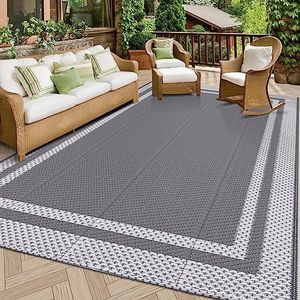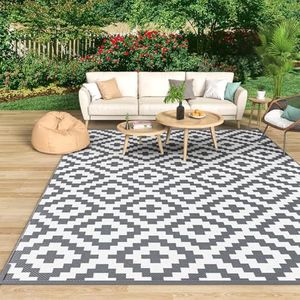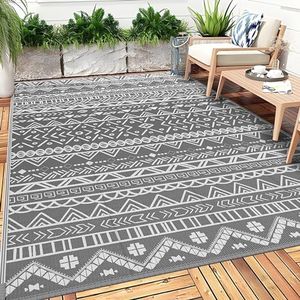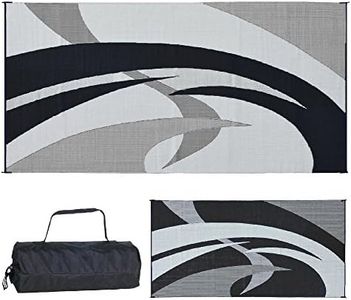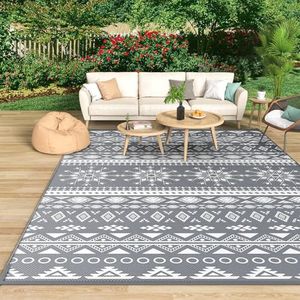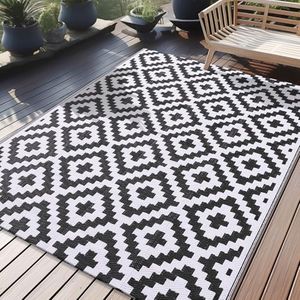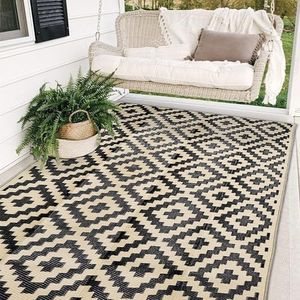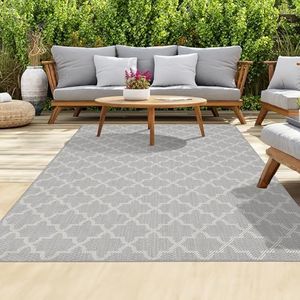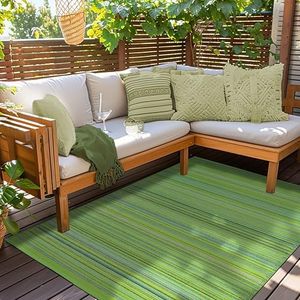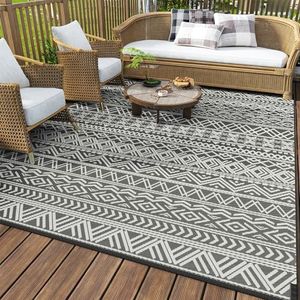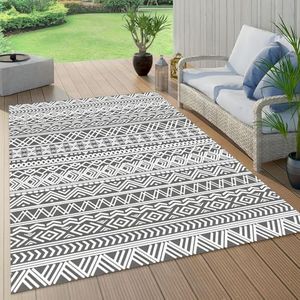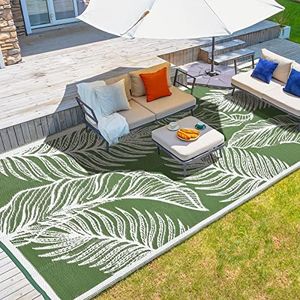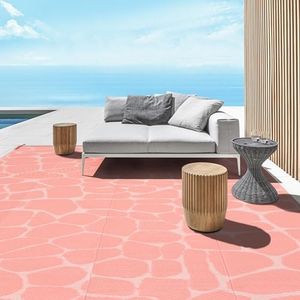We Use CookiesWe use cookies to enhance the security, performance,
functionality and for analytical and promotional activities. By continuing to browse this site you
are agreeing to our privacy policy
10 Best Fast Drying Outdoor Rugs
From leading brands and best sellers available on the web.Buying Guide for the Best Fast Drying Outdoor Rugs
When picking a fast-drying outdoor rug, it's important to think about where and how you'll use it. Outdoor rugs often face rain, humidity, and dirt, so quick drying is crucial for avoiding mold and keeping things comfortable underfoot. Focus on the materials, construction, and maintenance requirements to make sure you end up with something practical and suited to your lifestyle. Remember that different spaces like patios, decks, or poolside areas might have specific needs, so matching the rug's features to your environment will help you get the most out of your purchase.MaterialThe material of an outdoor rug is essential because it determines how well the rug can handle moisture and how quickly it dries. Common materials include polypropylene, polyester, and recycled plastics, all of which are resistant to water and dry out faster than natural fibers. Natural fibers like jute or sisal may absorb water and take longer to dry, which can lead to mold. When choosing material, decide based on your region's climate and how much exposure to water your rug will face. For very wet areas or poolside use, stick to synthetic materials for the fastest drying time.
Weave and ThicknessThe way a rug is woven and its thickness both affect how quickly it dries after getting wet. Looser weaves and thinner rugs allow for better air circulation, letting moisture escape more quickly. Thicker, tightly woven rugs can trap water, leading to slower drying and potentially more odor or mold issues. If your rug will get soaked frequently, opt for a thinner, looser weave. However, if comfort is more important and you have a covered or less exposed area, a slightly thicker rug might be suitable.
Backing and DrainageThe backing of a rug is what sits directly on your patio or deck surface. Some rugs have built-in drainage holes or non-absorbent backings that allow water to seep through and dry quickly. Others may have solid backings that retain moisture, making them slower to dry. For rainy or wet locations, look for rugs designed with drainage in mind. This is less crucial if you can bring the rug inside to dry or if it's sheltered from most rain.
UV and Mildew ResistanceFast drying is just one element of outdoor durability. A good outdoor rug should also be resistant to UV rays and mildew, since sun can fade colors and humidity encourages mold. UV resistance ensures your rug stays vibrant, while mildew resistance keeps it smelling fresh. If your rug is in a sunny, humid, or shaded area, look for these protective features to keep maintenance low and lifespan high.
Cleaning and MaintenanceOutdoor rugs will inevitably need cleaning, especially in spaces with kids, pets, or lots of foot traffic. Materials that dry quickly also tend to be easier to clean with a hose and dry out rapidly afterward. Consider how easy it is to hose down or spot-clean the rug—and how quickly it returns to normal. If hassle-free care is a priority, pick a rug labeled as easy to clean and fast drying.
Size and PlacementThe size and placement of the rug impacts drying time as well. Larger rugs take longer to dry, simply because they cover more area and retain more water. Rugs in shadier or poorly ventilated spots will dry more slowly than those in sun and open air. When picking a size, think about balancing coverage with practicality for your specific outdoor environment. For especially damp areas, consider multiple smaller rugs or runners rather than one large piece.
